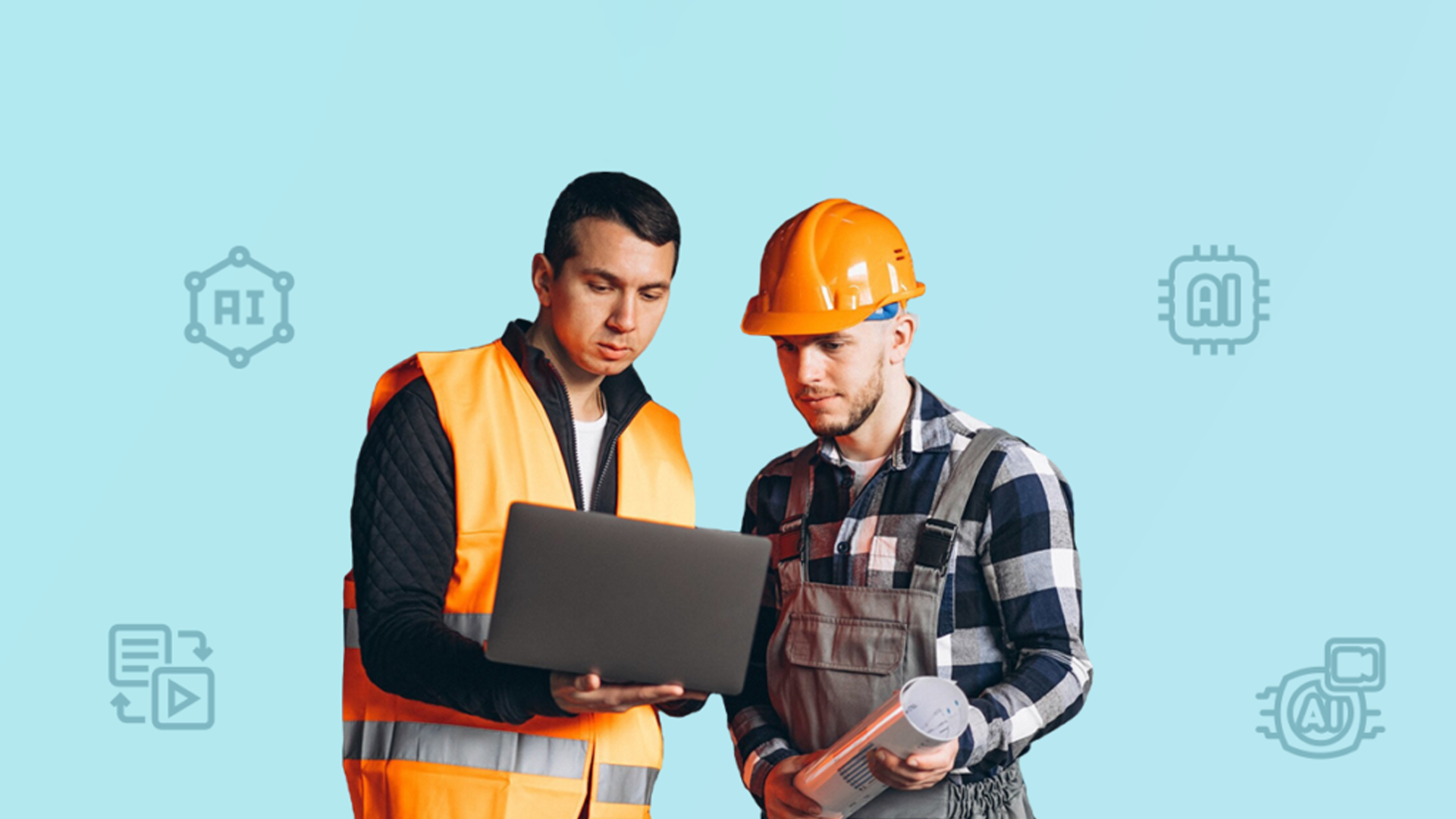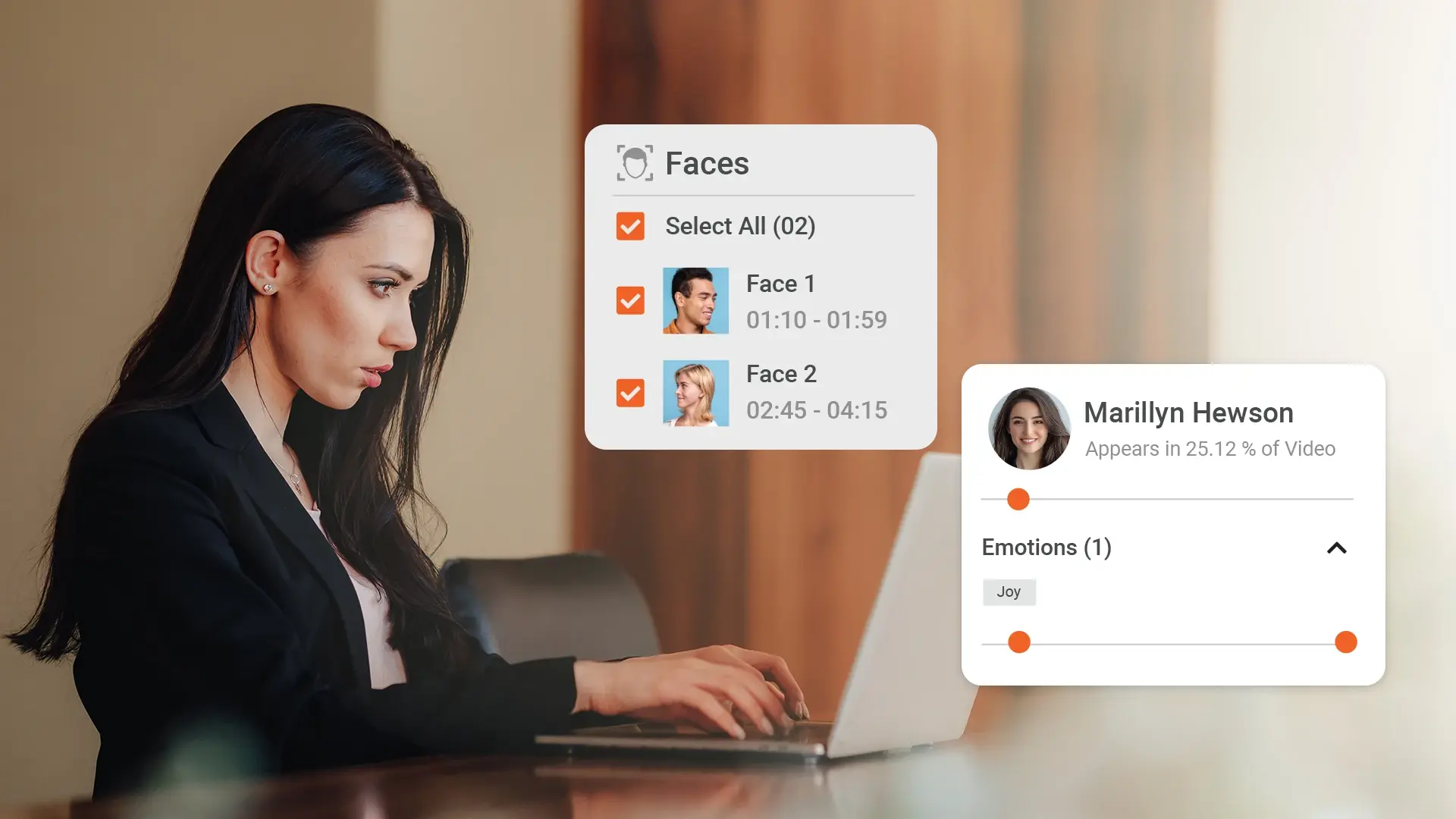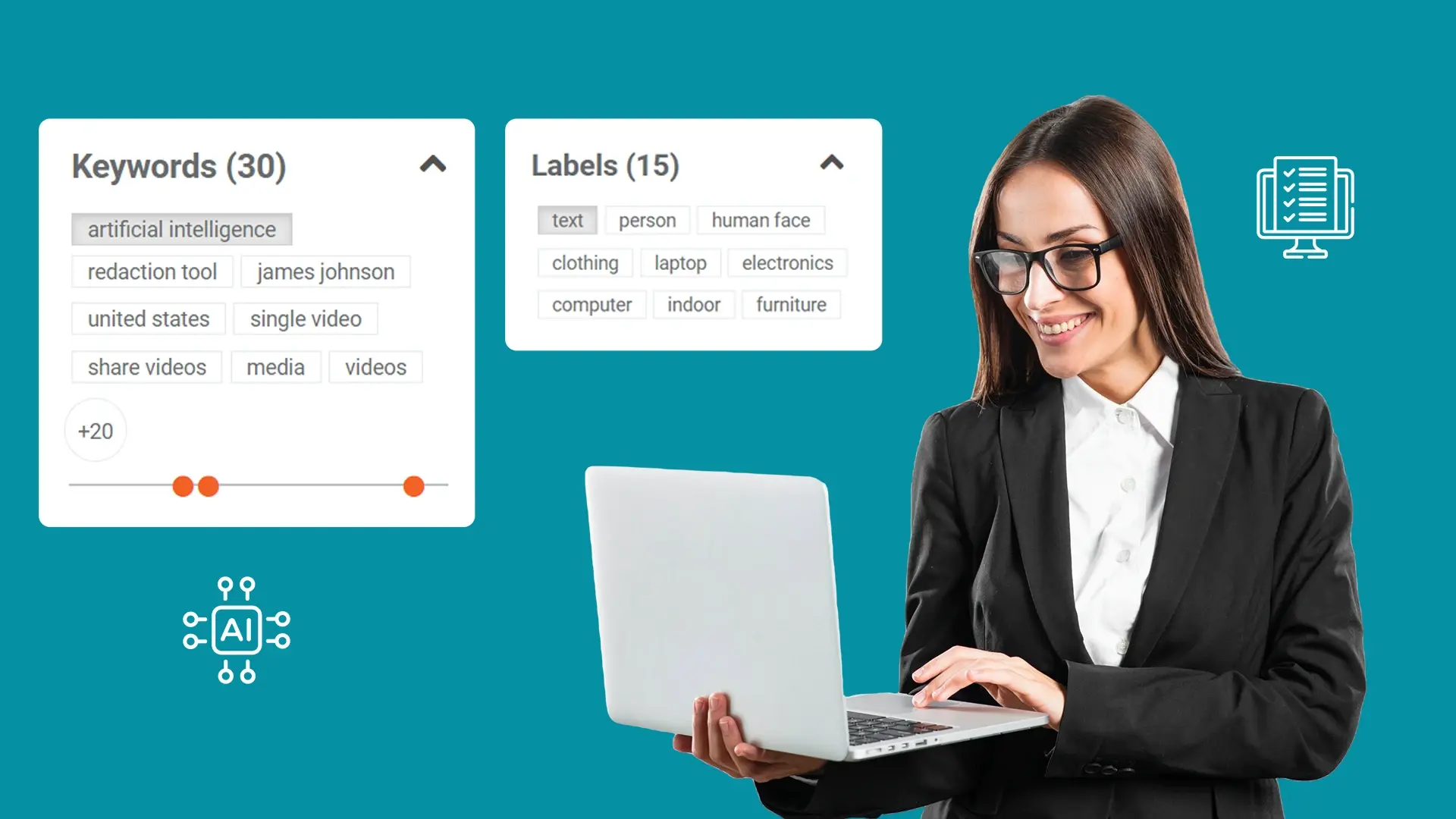How Video AI Is Transforming Manufacturing Operations
by Rafey Iqbal, Last updated: June 2, 2025

Discover how Video AI helps manufacturing organizations tackle downtime, improve product quality, and enhance workplace safety. This blog explores how AI-powered video analysis enables predictive maintenance, real-time quality control, and proactive safety monitoring on the factory floor.
In today's fast-paced manufacturing world, running an efficient and safe operation is no longer a “nice-to-have." It’s a necessity for survival.
Unplanned downtime can cause significant financial challenges for manufacturers. In fact, facilities can lose an average of $108,000 per hour due to unexpected equipment failures.
But how do you juggle everything? Maximizing production while keeping downtime to a minimum? Ensuring worker safety while maintaining tight deadlines? It often feels like you're fighting a losing battle.
If you're in charge of plant operations, quality control, or safety, these problems might keep you up at night. Maybe you've tried manual processes to keep everything in check, but it only results in missed opportunities and gaps in performance. Or, you’ve adopted technology, but it’s not intuitive enough, leaving you with data overload or lacking actionable insights.
What if there was a smarter way? A way to use technology not as a band-aid solution but as a true force multiplier? That’s where Video AI comes in, a game-changer for the manufacturing industry.
In this blog, we’ll examine how Video AI can solve some of the most pressing challenges faced by manufacturing organizations today, giving you a glimpse into the future of smarter, safer, and more efficient production environments.
The Problems Manufacturing Organizations Face Today
The following are some of the problems manufacturing organizations are facing today:
Operational Inefficiencies
The manufacturing floor is a busy, chaotic place, filled with moving parts, figuratively and literally. Downtime is one of the biggest productivity killers and happens more often than you’d think. Equipment malfunctions, human error, or inefficient workflows contribute to wasted hours that quickly eat into profits.
Most organizations rely on reactive maintenance, meaning they fix machinery after it breaks. But what if you could predict when the equipment was going to fail before it did? It sounds like something out of a sci-fi movie, but it’s the reality that Video AI brings to the table.
Quality Control Problems
Even with experienced teams, maintaining a high level of product quality can be challenging. Human error, machine imprecision, or variations in raw materials can result in inconsistent output. Detecting these issues after products have rolled off the assembly line means rework, waste, and missed deadlines.
Traditional quality control measures, which often rely on random inspections or batch testing, leave room for defects to slip through the cracks. Quality managers need a more proactive approach to ensure each product meets rigorous standards.
Workplace Safety and Compliance Issues
Safety is a non-negotiable in manufacturing. A single lapse in safety protocols can lead to accidents, injuries, and hefty regulatory fines. Unfortunately, monitoring for safety risks, especially in large facilities, can feel like an insurmountable task.
In most cases, safety officers rely on manual observations or post-incident investigations, which are reactive by nature. The real challenge is identifying hazards before they result in accidents.
Why Traditional Approaches Aren’t Enough
Manufacturing is an industry that has thrived on routine and incremental improvement. However, the complexity of today's production environments means that traditional methods, while familiar, are simply no longer enough for the following reasons:
Manual Monitoring is Slow and Inefficient
Sure, there’s comfort in routine, but it can also slow you down. Manual monitoring requires constant human attention and is prone to oversight. As manufacturing plants grow in size and complexity, it becomes increasingly difficult to track everything manually. And what happens when you miss a crucial detail? The repercussions can be costly.
Data Overload
Data is abundant in manufacturing, but it’s rarely used effectively. Most systems generate tons of data that often end up in silos, inaccessible to the teams that need them most. By the time you analyze the data, the issue has already spiraled out of control. You’re left playing catch-up rather than proactively addressing problems.
Reactive Safety Protocols
Despite advancements in workplace safety protocols, many organizations are still reactive. Accidents happen, and then you try to figure out what went wrong. But in a world where worker safety is paramount, waiting for an incident to occur before taking action just isn’t acceptable anymore.
How Video AI for Manufacturing Solves These Problems
Enter Video AI, a technology that goes beyond traditional video surveillance to provide real-time, actionable insights across multiple aspects of manufacturing. Here’s how it works and why it’s a game-changer:
Predictive Maintenance: Reducing Downtime Before It Happens
One of the most powerful applications of Video AI is predictive maintenance. Imagine a system that watches your equipment 24/7 and alerts you before a machine is about to fail. Video AI analyzes visual data from cameras and sensors in real time, detecting subtle signs of wear and tear that the human eye might miss.
This allows maintenance teams to schedule repairs at the most convenient times, reducing unplanned downtime and extending the lifespan of critical machinery. Instead of waiting for an emergency, you’re addressing issues before they become costly problems.
Predictive maintenance isn’t just a theory. It’s a proven strategy for improving operational efficiency. Companies leveraging AI-powered video solutions have seen a substantial reduction in downtime and maintenance costs.
Real-Time Quality Control: Ensuring Consistent Product Quality
For quality control managers, Video AI offers a revolution in how products are inspected. AI systems can be trained to detect defects in real time by analyzing visual data from the production line. Whether identifying imperfections in surface texture, incorrect dimensions, or even color variations, AI can perform these inspections faster and more accurately than human workers.
Moreover, AI-driven video systems can continuously learn from data, becoming more intelligent and improving their detection rates over time. This leads to fewer defective products making it out the door, less rework, and, ultimately, higher customer satisfaction.
Enhanced Safety Monitoring: Keeping Workers Safe
Worker safety is a top priority for any manufacturing organization, and Video AI can be your eyes on the factory floor. By monitoring work environments in real time, AI can identify potential hazards, whether it’s an employee not wearing proper PPE, a piece of equipment left in a dangerous position, or even overcrowding in hazardous areas.
But it goes beyond simple monitoring. AI systems can be configured to send alerts in real-time to safety officers, allowing them to take immediate action before an incident occurs. This proactive approach reduces the likelihood of accidents and ensures that safety protocols are followed consistently.
By adopting Video AI, companies can also demonstrate compliance with workplace safety regulations, minimizing the risk of legal penalties or fines.
The Future of Manufacturing: Why Video AI is Here to Stay
The promise of Video AI extends far beyond the immediate benefits. As technology continues to advance, AI systems will become even more integrated into manufacturing operations, serving as the backbone of Industry 4.0.
Imagine a fully automated manufacturing plant where AI monitors every aspect of production, from quality control to worker safety and machinery health. Issues are flagged in real-time, and adjustments are made autonomously, resulting in a hyper-efficient, safe, and scalable operation. This isn’t a far-off dream. It’s the future of manufacturing, and it’s happening right now.
By adopting Video AI, forward-thinking manufacturers can stay ahead of the competition, offering faster production times, higher-quality products, and safer working conditions. In a world with tight margins and high expectations, Video AI provides the intelligence needed to operate at peak performance.
The Competitive Advantage of Video AI in Manufacturing
Video AI is redefining what's possible for manufacturing organizations. From predictive maintenance and real-time quality control to proactive safety monitoring, the technology addresses key industry challenges with precision and speed.
By embracing Video AI for manufacturing, organizations can minimize downtime, improve product quality, and create safer work environments—all while staying competitive in a rapidly evolving industry.
If you're ready to turn your video data into real-time operational insights, don't wait. Start your free 7-day trial of EnterpriseTube today and experience the future of intelligent manufacturing.
People Also Ask
What is Video AI, and how does it apply to manufacturing?
Video AI uses artificial intelligence to analyze live and recorded video footage from manufacturing environments. It detects equipment anomalies, monitors worker safety, and identifies quality defects in real time, helping manufacturers improve efficiency and safety.
How does Video AI support predictive maintenance in factories?
Video AI helps predict equipment failures by monitoring machinery for subtle signs of wear or irregularity. This enables maintenance teams to perform repairs before breakdowns occur, reducing unplanned downtime and extending equipment lifespan.
Can Video AI improve product quality on the production line?
Video AI enhances product quality by performing real-time inspections. It detects defects such as incorrect dimensions, color variations, or surface flaws as products move along the line, ensuring consistent output and reducing waste.
How does Video AI increase workplace safety in manufacturing?
Video AI monitors employees and environments to ensure safety compliance. It identifies unsafe behaviors like missing PPE or proximity to hazardous zones, triggering alerts that help prevent accidents and ensure regulatory compliance.
What are the main benefits of Video AI in manufacturing operations?
The key benefits include reduced downtime through predictive maintenance, higher product quality through real-time inspection, proactive safety monitoring, and better use of operational data for informed decision-making.
Is Video AI difficult to implement in an existing manufacturing setup?
Video AI platforms are designed for easy deployment and can integrate with current video infrastructure. Many cloud-based systems require minimal hardware changes, making adoption fast and cost-effective for manufacturers.
Does Video AI help manufacturers comply with safety regulations?
Yes. Video AI helps organizations meet workplace safety standards by continuously monitoring for compliance issues and generating reports that support audits, inspections, and legal requirements.
What types of data does Video AI analyze in manufacturing?
Video AI primarily processes visual data from surveillance and production cameras. It can also be integrated with sensor and operational data to provide a more comprehensive view of factory conditions and performance.
How can Video AI reduce human error in quality and safety monitoring?
By automating inspections and compliance checks, Video AI removes the subjectivity and fatigue associated with manual monitoring. This results in more consistent detection of issues and quicker response times.
Why should manufacturers adopt Video AI now?
With increasing pressure to boost productivity, minimize risks, and stay competitive, manufacturers can’t afford to rely solely on traditional methods. Video AI delivers real-time insights that improve operations, safety, and product quality today, not just in the future.
Jump to
You May Also Like
These Related Stories

How Businesses Are Using Video AI to Drive Results

AI Video Auto-tagging: Why It Matters
-1.jpg)


No Comments Yet
Let us know what you think